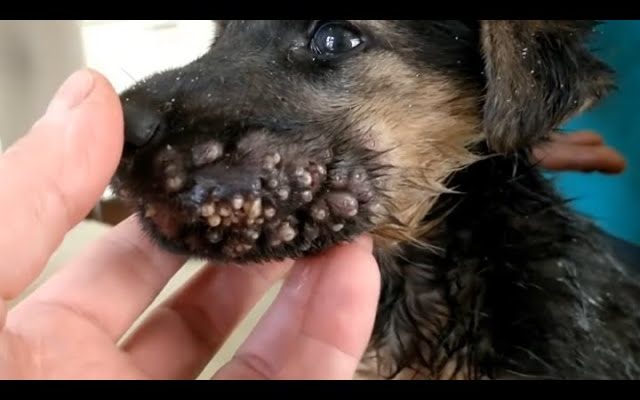Mangoworms and maggots are a common issue in stray dogs, especially in tropical and subtropical regions where parasitic infestations thrive due to warm, moist environments. The cleaning process of these parasitic larvae from a stray dog involves careful extraction, wound management, and proper aftercare to ensure the dog recovers fully. Understanding how these infestations occur, their symptoms, and the steps taken to treat them is essential in providing relief to affected animals.
Mangoworms in Stray Dogs
Mangoworms are the larvae of the Tumbu fly, a type of parasitic fly commonly found in Africa. These flies lay their eggs on surfaces like soil, clothes, or animal fur. When the eggs come into contact with a warm host, such as a dog, they hatch, and the larvae burrow into the skin. Over time, the larvae grow under the skin, causing painful swelling and discomfort. Stray dogs are especially vulnerable because they often roam in unsanitary conditions and may not receive proper care, leaving them susceptible to such infestations.
The signs of a mangoworm infestation include visible bumps or boils on the dog’s skin, which may excrete pus. Dogs may excessively scratch or bite at these areas due to irritation. Without treatment, the larvae can cause secondary infections, leading to more serious health issues.
Maggots in Stray Dogs
Maggots are larvae of different types of flies, such as the blowfly. They infest open wounds, feeding on necrotic tissue. For stray dogs, wounds often go untreated and can become breeding grounds for flies, especially in warm climates. The flies lay eggs in the wound, and these hatch into maggots. Maggots typically eat dead tissue but can also cause severe pain, infection, and further tissue damage if left untreated.
The presence of maggots can be detected by observing wounds that seem to be in worse condition than expected or by noticing movement within the wound, as maggots actively feed on tissue. Dogs with maggot infestations often display signs of pain, lethargy, and distress.
Cleaning Process
The cleaning process for mangoworms and maggots requires patience and precision. The first step is to restrain the dog safely to avoid injury, as the procedure can be uncomfortable for the animal. It’s essential to ensure the dog remains calm and as stress-free as possible during the cleaning.
For mangoworms, the extraction process involves gently squeezing around the swollen area to push the larvae out. It’s important not to burst the larvae inside the skin, as this can lead to further infections. Once the larvae are removed, the wound must be cleaned thoroughly with antiseptic solutions to reduce the risk of bacterial infections.
When dealing with maggots, a different approach is taken. The wound must be cleaned of any dead tissue, and the maggots are carefully removed using sterilized instruments like tweezers. The area is then flushed with an antiseptic to disinfect it. In some cases, a veterinarian may apply maggot-repelling creams or administer medications to help kill any remaining larvae and prevent future infestations.
Aftercare and Prevention
After the cleaning process, the dog requires proper aftercare to ensure full recovery. The wounds should be monitored closely, cleaned regularly, and treated with appropriate antibiotics if necessary to prevent infection. In severe cases, additional treatments, such as pain relief or surgical intervention, may be required.
Preventing future infestations is also crucial. Stray dogs are often at risk because they lack proper shelter, food, and medical care. Regular deworming, vaccinations, and maintaining a clean environment can significantly reduce the chances of parasitic infestations. Providing these dogs with a healthier environment through spay-and-neuter programs, veterinary outreach, and proper shelter can also decrease the overall prevalence of mangoworm and maggot infestations.
In conclusion, cleaning maggots and mangoworms from a stray dog is a delicate and vital process that involves proper removal techniques and aftercare to ensure the animal’s recovery. With timely intervention and care, stray dogs suffering from these parasitic infestations can experience relief and go on to live healthier lives.



